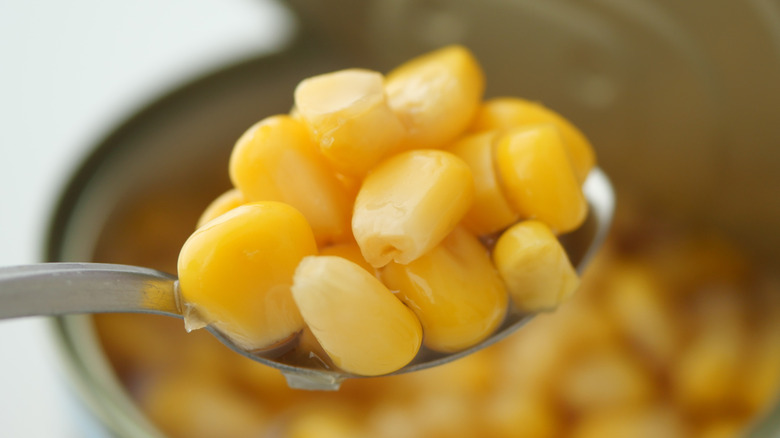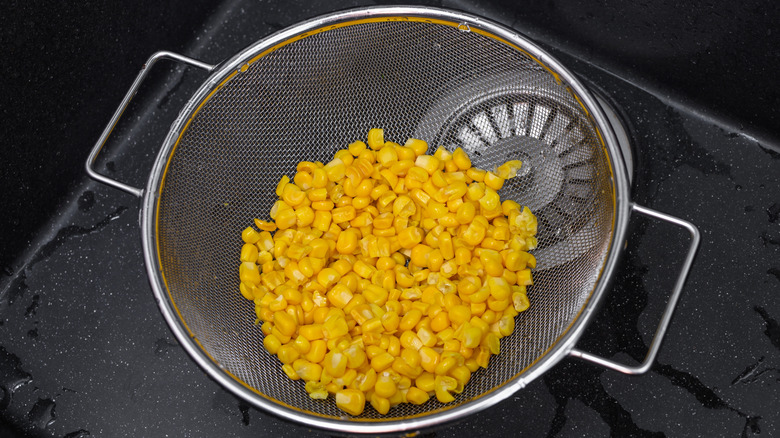The One Thing You Shouldn't Do Before Cooking Canned Corn
Canned corn is one of the most convenient things since sliced bread. Instead of laboriously shaving kernels off the cob, you can simply open a tin and create a canned corn side dish without any of the fuss. Even so, a food as simple as canned corn can benefit from a bit of preparation. One of the easiest ways to improve its taste is by rinsing it, so you shouldn't skip this step before cooking corn from the can.
This small step can have major benefits, and it only takes a few seconds. Corn is likely to absorb the tinny flavors of its container, an unpleasant side effect of the canning process. A quick rinse can reduce the issue, resulting in a cleaner, more natural taste. It can also improve texture by eliminating that slimy coating of stale canning liquid.
Rinsing canned corn also helps remove other unwanted additives. The USDA found that rinsing your kernels can remove up to 12% of sodium, and even properly draining the can will reduce the salt by 9%. Certain manufacturers also add sugar or starch to canning liquid, so washing it off gives you more flavor and nutrient control. This tiny tweak has a big payoff, improving the quality of your dishes with minimal effort and bringing the can's contents closer to the flavor of fresh corn.
How to rinse canned corn
The easiest way to rinse canned corn is by grabbing a colander, pouring the kernels in, and rinsing them with cold water in the sink. Shake the kernels vigorously under the water to make sure all surfaces are treated. Pat the corn dry if there's excessive water, and add it to your desired dish. You can follow the USDA's exact method by letting the water and byproducts drain from the coriander for two full minutes.
Another method for rinsing canned vegetables is to parboil them. Parboiling, also known as blanching, consists of partially boiling a food to improve texture and remove unwanted liquids before adding the ingredient to your meal. To parboil canned corn, drain the can, bring a pot of water to a boil, add the kernels, and cook for two minutes. Then, quickly plunge the corn into a bowl of ice water to halt the cooking process. Drain the residual ice water and pat everything dry if necessary. Opting for fresh or frozen corn can also help mitigate unwanted flavors and reduce additives, since no suspending liquid is involved.
If you're sticking with the canned variety and want the best post-rinse flavor and texture possible, consider adding a small pinch of sugar or salt to revive the kernels, and taste as you go to make sure you keep things in balance. Another one of the common mistakes everyone makes with canned corn is overcooking it, which leaves kernels mushy and can reduce sweetness. After a rinse, consider sautéing the kernels to add a nutty flavor and tinge of char, or roasting them for a smoky, savory finish.

